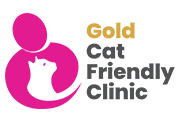At some point it’s likely we may have to make a decision and act in the best interest of our pets concerning the end of their life. Sadly, our pets have much shorter lives than us and when illness, injury, or old age affects their quality of life we may need to start thinking about letting them go, peacefully. It’s important to talk it through and be guided by your vet. It helps to plan and be prepared. Euthanasia offers a peaceful and painless end to our pet’s life. Sometimes people use the phrase ‘put to sleep’ or ‘put down’, but euthanasia is the correct term.</p
When is the right time?
Sometimes it’s difficult to know how our pet is really feeling. They can’t tell us if they are in pain so it’s our responsibility to look for signs of any changes that suggest that their quality of life is deteriorating. You may notice your pet has become particularly withdrawn or quiet and doesn’t want any physical contact or to go out. They may have stopped eating or drinking, and their toilet habits may have changed. An injury or illness may be affecting their well-being. To prevent further pain and unnecessary suffering it is important to talk through options with your vet who will help to guide you on the right time for making a decision about euthanasia.
Should I be there?
It’s a very personal decision. If you have friends and family, talk it through. Some people prefer to be with their pet during euthanasia and others feel it’s just too difficult and feel unable to stay, preferring to say goodbye afterwards. It’s your decision; let the vet or vet nurse know.
What can I expect?
You may want to think about where you would prefer the euthanasia to take place. It may be at the vet surgery at an arranged time, or it may be possible for the vet to come to your home. Talk to your vet about this. You will be asked to sign a form giving your permission and the euthanasia will be carried out by a vet, often with a nurse to assist. Your vet may give a sedative first to help relax them. A small patch of fur is shaved, usually from a front leg, and an injection is gently administered into a vein. This is a high dose of anaesthetic. As the injection is given your pet will lose consciousness within seconds. Their breathing and their heart will stop. Sometimes, especially if your pet is very old or frail, or if they have had a sedative, the vet may have difficulty in locating a vein and may instead have to inject into another area of the body. If your pet is a small animal, such as a hamster or rabbit, your vet may give them anaesthetic gas first so that they are asleep for the injection. These pets have smaller blood vessels and the injection is likely to be given into another area of the body.
What to expect afterwards?
Your pet’s eyes will probably remain open, their muscles may twitch and there might be an involuntary gasp or two. These are normal reactions after a death. Your vet will make sure that euthanasia has been completed and that your pet’s heart has stopped beating.
What happens next?
Before or after euthanasia you may want to consider having a small keepsake of your pet such as their collar or name tag, a paw print, or a small tuft of their fur. You may want to take your pet home to bury in the garden or use a pet cemetery. Another choice is cremation. Pets may be cremated individually or communally with others. If you arrange to have your pet cremated individually you will have the ashes returned to you in a casket to keep or scatter them in a favourite spot. A communal cremation means that you will not be able to have your pet’s ashes returned. Either way, you can expect your pet will be treated with dignity and respect. Ask your vet as many questions as possible about the options available, the likely costs involved. You could also remember your pet in a special way by planting flowers or a shrub, making a special photo album, or by creating a lasting memorial online by visiting The Blue Cross.
Coping with Bereavement
Support for you It can be a time of mixed and raw emotions leading up to and following euthanasia and the death of your pet. Your pet has been a special companion and member of the family. Some people experience intense feelings of grief, similar to a human loss. Often people describe feelings of guilt or numbness over their loss and this is normal and understandable. For others, there is a sense of calm and relief. Sharing your feelings and experience with others before and after euthanasia can be helpful.
The Blue Cross Pet Bereavement Support Service is a confidential telephone and email support line service that offers emotional support and information for all ages.
For the Support line call: 0800 096 6606 - available daily from 8.30am – 8.30pm. (Some mobile networks may charge)
For email support please email:





